The most important and significant of the legendary symbols of Freemasonry is, undoubtedly, that which relates to the fate of Hiram Abif, commonly called, ‘by way of excellence’, the Legend of the Third Degree.
The Legend of the Third Degree
Extracted from: The Symbolism of Freemasonry by Albert G. Mackey [1882]
The first written record that I have been able to find of this legend is contained in the second edition of Anderson’s Constitutions, published in 1738, and is in these words:
‘It (the temple) was finished in the short space of seven years and six months, to the amazement of all the world; when the cape-stone was celebrated by the fraternity with great joy. But their joy was soon interrupted by the sudden death of their dear master, Hiram Abif, whom they decently interred, in the lodge near the temple, according to ancient usage.’

St John’s Church, Chester (England). Stained glass window (1900) showing Hiram, the architect of the temple in Jerusalem
IMAGE LINKED: wikimedia Attribution 4.0 International (CC BY 4.0)
In the next edition of the same work, published in 1756, a few additional circumstances are related, such as the participation of King Solomon in the general grief, and the fact that the king of Israel ‘ordered his obsequies to be conducted with great solemnity and decency’.
With these exceptions, and the citations of the same passages, made by subsequent authors, the narrative has always remained unwritten, and descended, from age to age, through the means of oral tradition.
The legend has been considered of so much importance that it has been preserved in the symbolism of every Masonic rite.
No matter what modifications or alterations the general system may have undergone,—no matter how much the ingenuity or the imagination of the founders of rites may have perverted or corrupted other symbols, abolishing the old and substituting new ones,—the legend of the Temple Builder has ever been left untouched, to present itself in all the integrity of its ancient mythical form.

In an artistic representation, King Solomon dedicates the Temple at Jerusalem. By James Tissot
IMAGE LINKED: wikimedia Attribution 4.0 International (CC BY 4.0)
What, then, is the signification of this symbol, so important and so extensively diffused?
What interpretation can we give to it that will account for its universal adoption?
How is it that it has thus become so intimately interwoven with Freemasonry as to make, to all appearances, a part of its very essence, and to have been always deemed inseparable from it?
To answer these questions, satisfactorily, it is necessary to trace, in a brief investigation, the remote origin of the institution of Freemasonry, and its connection with the ancient systems of initiation.
It was, then, the great object of all the rites and mysteries which constituted the ‘Spurious Freemasonry’ of antiquity to teach the consoling doctrine of the immortality of the soul.
This dogma, shining as an almost solitary beacon-light in the surrounding gloom of pagan darkness, had undoubtedly been received from that ancient people or priesthood what has been called the system of ‘Pure Freemasonry’, and among whom it probably existed only in the form of an abstract proposition or a simple and unembellished tradition.
But in the more sensual minds of the pagan philosophers and mystics, the idea, when presented to the initiates in their Mysteries, was always conveyed in the form of a scenic representation.
The influence, too, of the early Sabian worship of the sun and heavenly bodies, in which the solar orb was adored, on its resurrection, each morning, from the apparent death of its evening setting, caused this rising sun to be adopted in the more ancient Mysteries as a symbol of the regeneration of the soul.

The Opening of the Mouth Ritual
The Book of the dead : Facsimiles of the papyri of Hunefer, Ȧnhai, Kerāsher and Netchemet, with supplementary text from the papyrus of Nu; with transcripts, translations, etc / by E.A. Wallis Budge. Printed by order of the Trustees.
IMAGE LINKED: wellcome collection Attribution 4.0 International (CC BY 4.0)
It will be sufficient here to refer simply to the fact, that through the instrumentality of the Tyrian workmen at the temple of King Solomon, the spurious and pure branches of the Masonic system were united at Jerusalem, and that the same method of scenic representation was adopted by the latter from the former, and the narrative of the temple builder substituted for that of Dionysus, which was the myth peculiar to the mysteries practised by the Tyrian workmen.

Phoenician Craftsmen Building a Temple for Solomon Page 324 Hutchinson’s Story of the Nations, Hutchinson & Co, London
IMAGE LINKED: Hutchinson & Co, London Attribution 4.0 International (CC BY 4.0)
The idea, therefore, proposed to be communicated in the myth of the ancient Mysteries was the same as that which is now conveyed in the Masonic legend of the Third Degree.
Hence, then, Hiram Abif is, in the Masonic system, the symbol of human nature, as developed in the life here and the life to come; and so, while the temple was, as I have heretofore shown, the visible symbol of the world, its builder became the mythical symbol of man, the dweller and worker in that world.
Now, is not this symbolism evident to every reflective mind?
Man, setting forth on the voyage of life, with faculties and powers fitting him for the due exercise of the high duties to whose performance he has been called, holds, if he be ‘a curious and cunning workman’, skilled in all moral and intellectual purposes (and it is only of such men that the temple builder can be the symbol), within the grasp of his attainment the knowledge of all that divine truth imparted to him as the heirloom of his race—that race to whom it has been granted to look, with exalted countenance, on high; which divine truth is symbolized by the WORD.
Thus provided with the word of life, he occupies his time in the construction of a spiritual temple, and travels onward in the faithful discharge of all his duties, laying down his designs upon the trestle-board of the future and invoking the assistance and direction of God.
But is his path always over flowery meads and through pleasant groves?
Is there no hidden foe to obstruct his progress?
Is all before him clear and calm, with joyous sunshine and refreshing zephyrs?
Alas! not so. ‘Man is born to trouble, as the sparks fly upward.’
At every ‘gate of life’—as the Orientalists have beautifully called the different ages—he is beset by peril.
Temptations allure his youth, misfortunes darken the pathway of his manhood, and his old age is encumbered with infirmity and disease.
But clothed in the armour of virtue he may resist the temptation; he may cast misfortunes aside, and rise triumphantly above them; but to the last, the direst, the most inexorable foe of his race, he must eventually yield; and stricken down by death, he sinks prostrate into the grave, and is buried in the rubbish of his sin and human frailty.
Here, then, in Masonry, is what was called the aphanism in the ancient Mysteries.
The bitter but necessary lesson of death has been imparted. The living soul, with the lifeless body which encased it, has disappeared, and can nowhere be found.
All is darkness—confusion— despair. Divine truth—the WORD—for a time is lost, and the Master Mason may now say, in the language of Hutchinson,
I prepare my sepulchre. I make my grave in the pollution of the earth. I am under the shadow of death.

This Degree
IMAGE LINKED: Wikimedia Attribution 4.0 International (CC BY 4.0)
But if the mythic symbolism ended here, with this lesson of death, then were the lesson incomplete.
That teaching would be vain and idle—nay, more, it would be corrupt and pernicious—which should stop short of the conscious and innate instinct for another existence.
And hence the succeeding portions of the legend are intended to convey the sublime symbolism of a resurrection from the grave and a new birth into a future life.
The discovery of the body, which, in the initiations of the ancient Mysteries, was called the euresis, and its removal, from the polluted grave into which it had been cast, to an honoured and sacred place within the precincts of the temple, are all profoundly and beautifully symbolic of that great truth, the discovery of which was the object of all the ancient initiations, as it is almost the whole design of Freemasonry, namely, that when man shall have passed the gates of life and have yielded to the inexorable fiat of death, he shall then (not in the pictured ritual of an earthly lodge, but in the realities of that eternal one, of which the former is but an antitype) be raised, at the omnific word of the Grand Master of the Universe, from time to eternity; from the tomb of corruption to the chambers of hope; from the darkness of death to the celestial beams of life; and that his disembodied spirit shall be conveyed as near to the holy of holies of the divine presence as humanity can ever approach to Deity.
Such I conceive to be the true interpretation of the symbolism of the legend of the Third Degree.
I have said that this mythical history of the temple builder was universal in all nations and all rites, and that in no place and at no time had it, by alteration, diminution, or addition, acquired any essentially new or different form: the myth has always remained the same.
But it is not so with its interpretation. That which I have just given, and which I conceive to be the correct one, has been very generally adopted by the Masons of this country.
But elsewhere, and by various writers, other interpretations have been made, very different in their character, although always agreeing in retaining the general idea of a resurrection or regeneration, or a restoration of something from an inferior to a higher sphere or function.
Thus, some of the earlier continental writers have supposed the myth to have been a symbol of the destruction of the Order of the Templars, looking upon its restoration to its original wealth and dignities as being prophetically symbolized.
In some of the high philosophical degrees it is taught that the whole legend refers to the sufferings and death, with the subsequent resurrection, of Christ.
Hutchinson, who has the honour of being the earliest philosophical writer on Freemasonry in England, supposes it to have been intended to embody the idea of the decadence of the Jewish religion, and the substitution of the Christian in its place and on its ruins.
Dr Oliver—clarum et venerabile nomen—thinks that it is typical of the murder of Abel by Cain, and that it symbolically refers to the universal death of our race through Adam, and its restoration to life in the Redeemer, according to the expression of the apostle, ‘As in Adam we all died, so in Christ we all live.’
Ragon makes Hiram a symbol of the sun shorn of its vivifying rays and fructifying power by the three winter months, and its restoration to generative heat by the season of spring.
And, finally, Des Etangs, adopting, in part, the interpretation of Ragon, adds to it another, which he calls the moral symbolism of the legend, and supposes that Hiram is no other than eternal reason, whose enemies are the vices that deprave and destroy humanity.
To each of these interpretations it seems to me that there are important objections, though perhaps to some less so than to others.
As to those who seek for an astronomical interpretation of the legend, in which the annual changes of the sun are symbolized, while the ingenuity with which they press their argument cannot but be admired, it is evident that, by such an interpretation, they yield all that Masonry has gained of religious development in past ages, and fall back upon that corruption and perversion of Sabaism from which it was the object, even of the Spurious Freemasonry of antiquity, to rescue its disciples.
The Templar interpretation of the myth must at once be discarded if we would avoid the difficulties of anachronism, unless we deny that the legend existed before the abolition of the Order of Knights Templar, and such denial would be fatal to the antiquity of Freemasonry.
And as to the adoption of the Christian reference, Hutchinson, and after him Oliver, profoundly philosophical as are the Masonic speculations of both, have, I am constrained to believe, fallen into a great error in calling the Master Mason’s degree a Christian institution.
It is true that it embraces within its scheme the great truths of Christianity upon the subject of the immortality of the soul and the resurrection of the body; but this was to be presumed, because Freemasonry is truth, and Christianity is truth, and all truth must be identical.
But the origin of each is different; their histories are dissimilar. The institution of Freemasonry preceded the advent of Christianity.
Its symbols and its legends are derived from the Solomonic temple, and from the people even anterior to that.
Its religion comes from the ancient priesthood. Its faith was that primitive one of Noah and his immediate descendants.
If Masonry were simply a Christian institution, the Jew and the Moslem, the Brahmin, and the Buddhist, could not conscientiously partake of its illumination; but its universality is its boast.
In its language citizens of every nation may converse; at its altar men of all religions may kneel; to its creed disciples of every faith may subscribe.
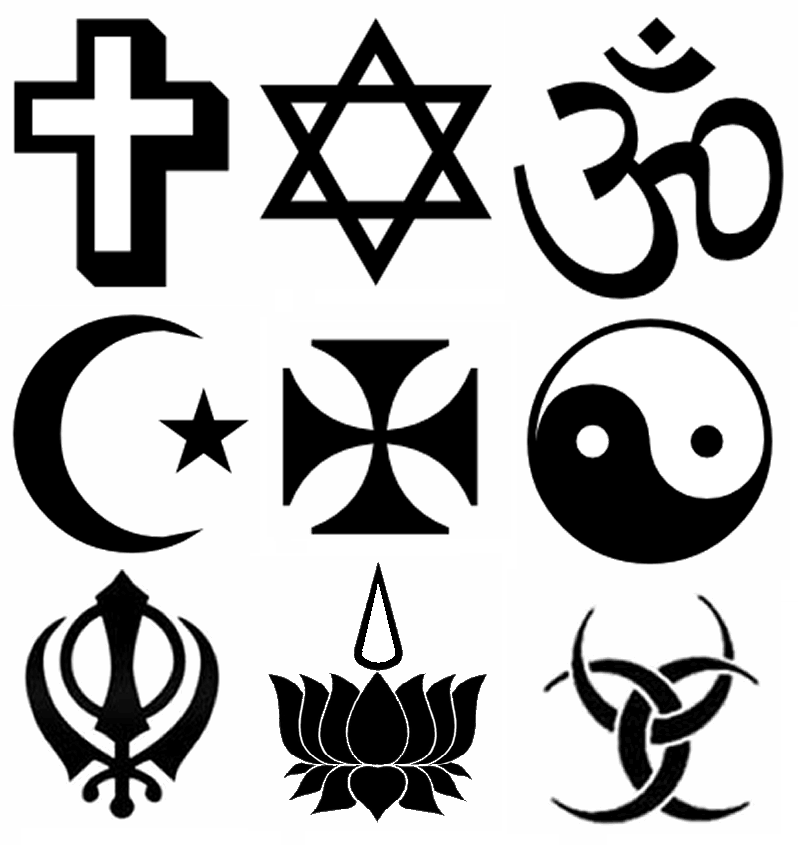
Symbols
IMAGE LINKED: Wikimedia Attribution 4.0 International (CC BY 4.0)
Yet it cannot be denied, that since the advent of Christianity a Christian element has been almost imperceptibly infused into the Masonic system, at least among Christian Masons.
This has been a necessity; for it is the tendency of every predominant religion to pervade with its influences all that surrounds it, or is about it, whether religious, political, or social.
This arises from a need of the human heart. To the man deeply imbued with the spirit of his religion there is an almost unconscious desire to accommodate and adapt all the business and the amusements of life, the labours and the employments of his everyday existence, to the indwelling faith of his soul.
The Christian Mason, therefore, while acknowledging and justly appreciating the great doctrines taught in Masonry, and while grateful that these doctrines were preserved in the bosom of his ancient order at a time when they were unknown to the multitudes of the surrounding nations, is still anxious to give to them a Christian character, to invest them, in some measure, with the peculiarities of his own creed, and to bring the interpretation of their symbolism more nearly home to his own religious sentiments.
The feeling is an instinctive one, belonging to the noblest aspirations of our human nature; and hence we find Christian Masonic writers indulging in it almost to an unwarrantable excess, and by the extent of their sectarian interpretations materially affecting the cosmopolitan character of the institution.
This tendency to Christianisation has, in some instances, been so universal, and has prevailed for so long a period, that certain symbols and myths have been, in this way, so deeply and thoroughly imbued with the Christian element as to leave those who have not penetrated into the cause of this peculiarity, in doubt whether they should attribute to the symbol an ancient or a modern and Christian origin.
As an illustration of the idea here advanced, and as a remarkable example of the result of a gradually Christianized interpretation of a Masonic symbol, I will refer to the subordinate myth (subordinate, I mean, to the great legend of the Builder), which relates the circumstances connected with the grave upon the brow of a small hill near Mount Moriah.
Now, the myth or legend of a grave is a legitimate deduction from the symbolism of the ancient Spurious Masonry.
It is the analogue of the Pastos, Couch, or Coffin, which was to be found in the ritual of all the pagan Mysteries.
In all these initiations, the aspirant was placed in a cell or upon a couch, in darkness, and for a period varying, in the different rites, from the three days of the Grecian Mysteries to the fifty of the Persian.
This cell or couch, technically called the ‘pastos’, was adopted as a symbol of the being whose death and resurrection or apotheosis, was represented in the legend.
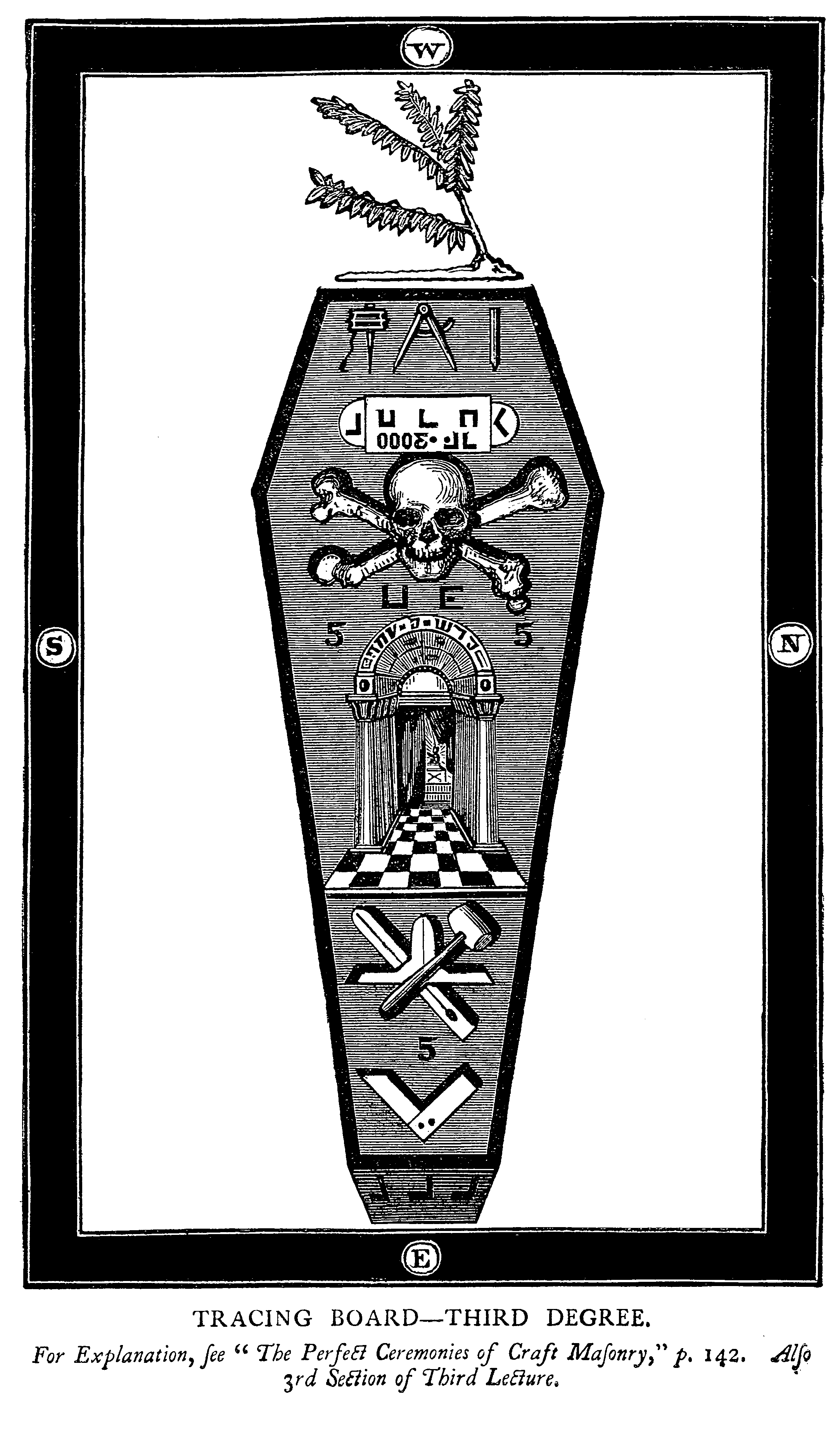
Third Degree Tracing Board
IMAGE LINKED: Wikimedia Attribution 4.0 International (CC BY 4.0)
The learned Faber says that this ceremony was doubtless the same as the descent into Hades, and that, when the aspirant entered into the mystic cell, he was directed to lay himself down upon the bed which shadowed out the tomb of the Great Father, or Noah, to whom, it will be recollected, that Faber refers all the ancient rites.
‘While stretched upon the holy couch’, he continues to remark, ‘in imitation of his figurative deceased prototype, he was said to be wrapped in the deep sleep of death. His resurrection from the bed was his restoration to life or his regeneration into a new world.’
Now, it is easy to see how readily such a symbolism would be seized by the Temple Masons, and appropriated at once to the grave at the brow of the hill.
At first, the interpretation, like that from which it had been derived, would be cosmopolitan; it would fit exactly to the general dogmas of the resurrection of the body and the immortality of the soul.
But on the advent of Christianity, the spirit of the new religion being infused into the old Masonic system, the whole symbolism of the grave was affected by it.
The same interpretation of a resurrection or restoration to life, derived from the ancient ‘pastos’, was, it is true, preserved; but the facts that Christ himself had come to promulgate to the multitudes the same consoling dogma, and that Mount Calvary, ‘the place of a skull’, was the spot where the Redeemer, by his own death and resurrection, had testified the truth of the doctrine, at once suggested to the old Christian Masons the idea of Christianizing the ancient symbol.

Skull Hill as seen in 1901 from the northern walls of Jerusalem’s Old City. By The Garden Tomb Association – Own work,
IMAGE LINKED: Wikimedia Attribution 4.0 International (CC BY 4.0)
Let us now examine briefly how that idea has been at length developed.
In the first place, it is necessary to identify the spot where the ‘newly-made grave’ was discovered with Mount Calvary, the place of the sepulchre of Christ.
This can easily be done by a very few but striking analogies, which will, I conceive, carry conviction to any thinking mind.
1. Mount Calvary was a small hill.
2. It was situated in a westward direction from the temple, and near Mount Moriah.
3. It was on the direct road from Jerusalem to Joppa, and is thus the very spot where a weary brother, travelling on that road, would find it convenient to sit down to rest and refresh himself.
4. It was outside the gate of the temple.
5. It has at least one cleft in the rock, or cave, which was the place which subsequently became the sepulchre of our Lord. But this coincidence need scarcely to be insisted on, since the whole neighbourhood abounds in rocky clefts, which meet at once the conditions of the Masonic legend.
But to bring this analogical reasoning before the mind in a more expressive mode, it may be observed that if a party of persons were to start forth from the temple at Jerusalem, and travel in a westward direction towards the port of Joppa, Mount Calvary would be the first hill met with; and as it may possibly have been used as a place of sepulchre, which its name of Golgotha seems to import, we may suppose it to have been the very spot alluded to in the Third Degree, as the place where the craftsmen, on their way to Joppa, discovered the evergreen acacia.
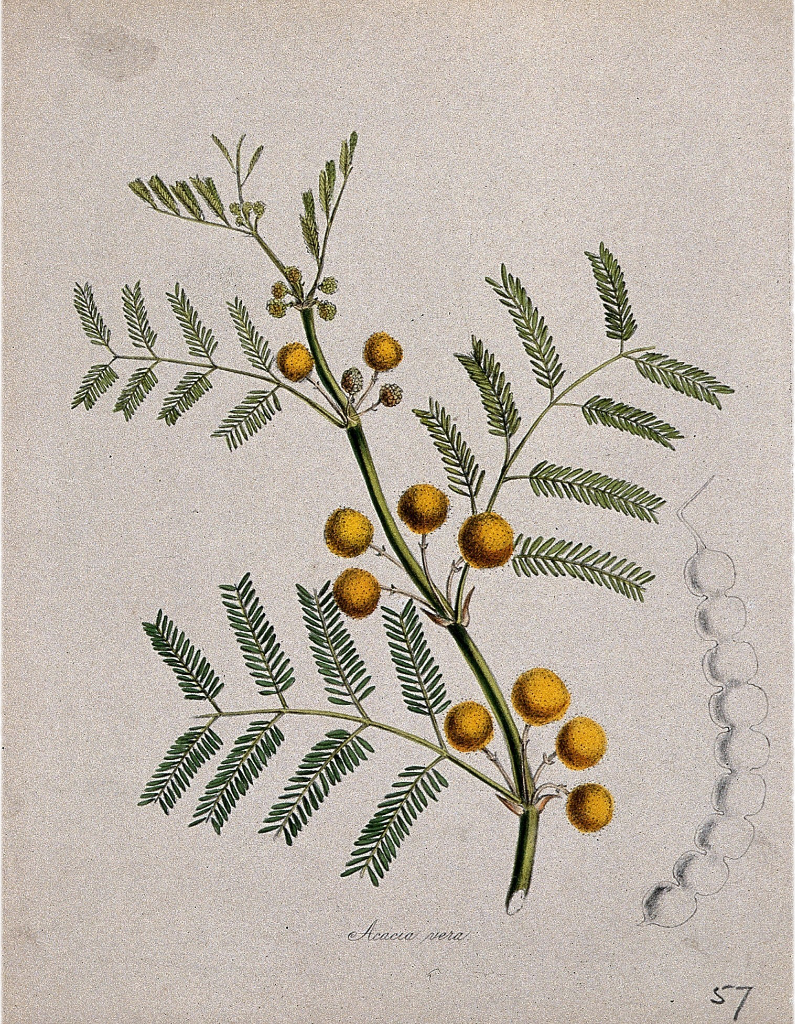
.
IMAGE LINKED: Wikimedia Attribution 4.0 International (CC BY 4.0)
Having thus traced the analogy, let us look a little to the symbolism.
Mount Calvary has always retained an important place in the legendary history of Freemasonry, and there are many traditions connected with it that are highly interesting in their import.
One of these traditions is, that it was the burial-place of Adam, in order, says the old legend, that where he lay, who effected the ruin of mankind, there also might the Saviour of the world suffer, die, and be buried. Sir R. Torkington, who published a pilgrimage to Jerusalem in 1517, says that:
‘under the Mount of Calvary is another chapel of our Blessed Lady and St. John the Evangelist, that was called Golgotha; and there, right under the mortise of the cross, was found the head of our forefather, Adam’.
Golgotha, it will be remembered, means, in Hebrew, ‘the place of a skull’; and there may be some connection between this tradition and the name of Golgotha, by which the Evangelists inform us, that in the time of Christ Mount Calvary was known. Calvary, or Calvaria, has the same signification in Latin.
![]()
Chapel of Mount Calvary from Views in the Ottoman Dominions, in Europe, in Asia, and some of the Mediterranean islands (1810) illustrated by Luigi Mayer (1755-1803). By Rawpixel – Own work,
IMAGE LINKED: Wikimedia Attribution 4.0 International (CC BY 4.0)
Another tradition states, that it was in the bowels of Mount Calvary that Enoch erected his nine-arched vault, and deposited on the foundation-stone of Masonry that Ineffable Name, whose investigation, as a symbol of divine truth, is the great object of Speculative Masonry.
A third tradition details the subsequent discovery of Enoch’s deposit by King Solomon, whilst making excavations in Mount Calvary, during the building of the temple.
On this hallowed spot was Christ the Redeemer slain and buried. It was there that, rising on the third day from his sepulchre, he gave, by that act, the demonstrative evidence of the resurrection of the body and the immortality of the soul.
And it was on this spot that the same great lesson was taught in Masonry—the same sublime truth—the development of which evidently forms the design of the Third or Master Mason’s degree.
There is in these analogies a sublime beauty as well as a wonderful coincidence between the two systems of Masonry and Christianity, that must, at an early period, have attracted the attention of the Christian Masons.

The Garden Tomb, Jerusalem. By Phillip Benshmuel – Own work
IMAGE LINKED: Wikimedia Attribution 4.0 International (CC BY 4.0)
Mount Calvary is consecrated to the Christian as the place where his crucified Lord gave the last great proof of the second life, and fully established the doctrine of the resurrection which he had come to teach. It was the sepulchre of him:
![]()
Who captive led captivity,
Who robbed the grave of victory,
And took the sting from death.
It is consecrated to the Mason, also, as the scene of the euresis, the place of the discovery, where the same consoling doctrines of the resurrection of the body and the immortality of the soul are shadowed forth in profoundly symbolic forms.
These great truths constitute the very essence of Christianity, in which it differs from and excels all religious systems that preceded it; they constitute, also, the end, aim, and object of all Freemasonry, but more especially that of the Third Degree, whose peculiar legend, symbolically considered, teaches nothing more nor less than that there is an immortal and better part within us, which, as an emanation from that divine spirit which pervades all nature, can never die.
The identification of the spot on which this divine truth was promulgated in both systems—the Christian and the Masonic—affords an admirable illustration of the readiness with which the religious spirit of the former may be infused into the symbolism of the latter.
And hence Hutchinson, thoroughly imbued with these Christian views of Masonry, has called the Master Mason’s order a Christian degree, and thus Christianises the whole symbolism of its mythical history.
The Great Father of all, commiserating the miseries of the world, sent his only Son, who was innocence itself, to teach the doctrine of salvation—by whom man was raised from the death of sin unto the life of righteousness—from the tomb of corruption unto the chamber of hope—from the darkness of despair to the celestial beams of faith; and not only working for us this redemption, but making with us the covenant of regeneration; whence we are become the children of the Divinity, and inheritors of the realms of heaven.
We, Masons, describing the deplorable estate of religion under the Jewish law, speak in figures: ‘Her tomb was in the rubbish and filth cast forth of the temple’, and acacia wove its branches over her monuments; akakia being the Greek word for innocence, or being free from sin; implying that the sins and corruptions of the old law, and devotees of the Jewish altar, had hid Religion from those who sought her, and she was only to be found where innocence survived, and under the banner of the Divine Lamb, and, as to ourselves, professing that we were to be distinguished by our Acacy, or as true Acacians in our religious faiths and tenets.
The acquisition of the doctrine of redemption is expressed in the typical character of Huramen (I have found it.—Greek), and by the applications of that name with Masons, it is implied that we have discovered the knowledge of God and his salvation, and have been redeemed from the death of sin and the sepulchre of pollution and unrighteousness.
Thus, the Master Mason represents a man, under the Christian doctrine, saved from the grave of iniquity and raised to the faith of salvation.
It is in this way that Masonry has, by a sort of inevitable process (when we look to the religious sentiment of the interpreters), been Christianised by some of the most illustrious and learned writers on Masonic science—by such able men as Hutchinson and Oliver in England, and by Harris, by Scott, by Salem Towne, and by several others in this country.
I do not object to the system when the interpretation is not strained, but is plausible, consistent, and productive of the same results as in the instance of Mount Calvary: all that I contend for is, that such interpretations are modern, and that they do not belong to, although they may often be deduced from, the ancient system.
But the true ancient interpretation of the legend,—the universal Masonic one,—for all countries and all ages, undoubtedly was, that the fate of the temple builder is but figurative of the pilgrimage of man on earth, through trials and temptations, through sin and sorrow, until his eventual fall beneath the blow of death and his final and glorious resurrection to another and an eternal life.

Memento mori. Gravestone inscription (1746). Edinburgh. St. Cuthbert’s Churchyard. By Daniel Naczk – Own work
IMAGE LINKED: Wikimedia Attribution 4.0 International (CC BY 4.0)
Article by: Albert G. Mackey
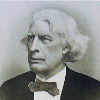
Albert Gallatin Mackey (1807 – 1881) was an American medical doctor and author.
He is best known for his books and articles about freemasonry, particularly the Masonic Landmarks.
In 1849 he established The Southern and Western Masonic Miscellany, a weekly masonic magazine.
He served as Grand Lecturer and Grand Secretary of The Grand Lodge of South Carolina, as well as Secretary General of the Supreme Council of the Ancient and Accepted Scottish Rite for the Southern Jurisdiction of the United States
Recent Articles: Masonic Miscellanies
 Masonic Miscellanies - The Amulet of the Ladder Explore the cosmic significance of the Ladder in ancient Egyptian mythology through Wallis Budge's "Egyptian Magic." Discover how this profound symbol bridges the mortal and divine, encapsulating the Egyptians' fervent afterlife aspirations with a blend of myth, magic, and material culture. Dive into the celestial ascent of Osiris and mortal souls. |
 Masonic Miscellanies - Adulterine Gilds Guilds, the associations that shaped medieval European society, were more than just organizations of artisans and merchants. They played a vital role in the economic and social development of towns and cities. This exploration delves into the intriguing concept of adulterine gilds and their interconnectedness with guilds, offering insight into the significance of legal authorization and recognition in medieval Europe. |
 Masonic Miscellanies - Masonic Orb Discover the fascinating world of Masonic ball watch fobs, intricately crafted with tiny pyramids that form a cross when opened. These decorative accessories were all the rage in the late 1800s and early 1900s, and they still hold a certain allure today. Explore the different varieties and symbols found on these unique pieces that carry deep Masonic meaning. |
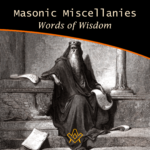 Masonic Miscellanies – Words of Wisdom Uncover timeless wisdom from King Solomon to Albert Pike in our latest Masonic Miscellanies, a treasure trove of insights for Masons. Journey through the ages and glean inspiring sayings, reflecting on their profound influence on Masonic principles. An enriching read for the enlightened. |
 Masonic Miscellanies - Symbolism of the Right Hand Unlock the enigmatic realm of Freemasonry as we delve into its age-old symbols, rituals, and philosophies. This thought-provoking exploration, drawn from Mackey's Revised Encyclopedia of Freemasonry, focuses on the iconic 'right hand' symbol - its rich history, universality, and profound significance. |
 Masonic Miscellanies - Order of the Secret Monitor Unveil the mystery of Freemasonry with 'The Order of the Secret Monitor'. Discover this lesser-known appendant order, its unique rituals, and the profound teachings it offers. Explore the bonds of friendship and brotherhood it fosters, all wrapped in an intriguing cloak of mystery. Your journey into the depths of Masonic wisdom begins here. |
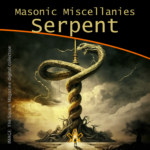 Masonic Miscellanies - The Symbol of the Serpent As a symbol, the serpent obtained a prominent place in all the ancient initiations and religions. |
 Masonic Miscellanies - The Four Veils in Royal Arch Masonry What are the four veils in Royal Arch Masonry? And what is the 'Ceremony of Passing the Veils'? Although common throughout Scotland, Ireland and the United States, it is mostly unknown in England, presently only worked in the Province of Bristol. ( and by dispensation ) |
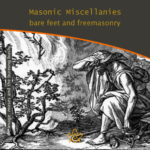 Masonic Miscellanies - Bare feet and Freemasonry A candidate for initiation into a Masonic Lodge often finds the requirements which he/she must fulfil somewhat odd. The mode of preparation often remains a puzzle, since the ritualistic explanation is not offered in full. Why are we 'slipshod' or "bare-footed" in Masonic Ritual? |
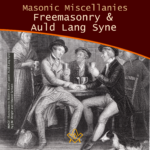 Masonic Miscellanies – Freemasonry and Auld Lang Syne Millions of people throughout the world will sing Auld Lang Syne to see out the Old Year. Few will know all the words, fewer still know what they mean, or that there is a link to Freemasonry. |
 Masonic Miscellanies - The Mosaic Pavement - why mosaic, why pavement? We are all familiar with the black and white chequered flooring of the Masonic lodge but where did it originate? There are a few theories… |
 Masonic Miscellanies – Masonic Master's Carpets Have you got a magic "Masonic Master's Carpet" in your lodge? I say 'magic' with my tongue firmly in my cheek because (as far as I know) these fabulous works of art don't bestow any mystical powers but can bestow some educational ones! However, considering their possible value today, they may magic up some interest (or funds). |
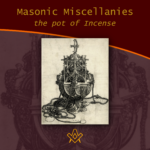 Masonic Miscellanies – The Pot of Incense Just when the pot of incense became an emblem of the third section of the Sublime Degree can not be stated with certainty. It is, apparently, an American invention or addition. But what does it symbolise? |
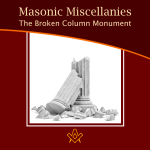 Masonic Miscellanies - The Broken Column Monument The story of the broken column was first illustrated by Amos Doolittle in the "True Masonic Chart" by Jeremy Cross, published in 1819. |
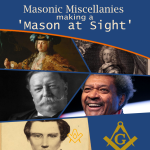 Masonic Miscellanies - Making a 'Mason at Sight' What does it mean to make a 'Mason at sight', and who was made one? |
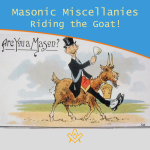 Masonic Miscellanies - Riding the Goat! Many Freemasons will have come across the phrase 'riding the goat', and will no doubt have been the butt of a joke about it (sorry, I couldn't resist!) But what does it mean and where did the phrase come from? |
 Masonic Miscellanies - What are the 'three dots'? Three dots or points in an upright triangular shape ∴ is most commonly known as the 'therefore' sign – so why is it used in Freemasonry? |
 Masonic Miscellanies - Keep Within Compass This month we discover a series of allegorical prints warning us to "Keep within Compass and you shall be sure, to avoid many troubles which others endure." |
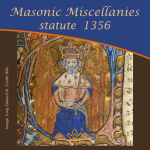 Masonic Miscellanies - statute 1356 Further to the reference in the article – The Builders - 6 - Free-Masons 'a statute was enacted against the Free-masons in 1356' – Regulations for masons who are hewers, on the one hand, and the light masons and setters on the other. |
 Masonic Miscellanies - An Anti-Masonic 'Apron'? The Anti-Masonic 'Apron' was created during the 1832 Presidential election in USA. It was not Ani-masonic. And it was not an apron. Read on to find out what and why it was created. |
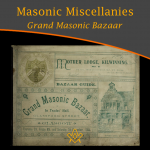 Masonic Miscellanies - Grand Masonic Bazaar (1895) Grand Masonic Bazaar (1895); to raise funds to clear the debt incurred by “Mother Kilwinning” in rebuilding their Lodge. |
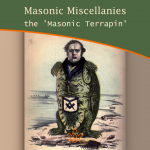 Masonic Miscellanies - the 'Masonic Terrapin' A satirical book from 1851 includes a bizarre caricature of a 'Masonic Terrapin' - all I can say is 'read on'… |
 Masonic Miscellanies - Masonic Bookplates You probably know what a bookplate is for, but did you know that the earliest known book mark/label dates from the reign of Amenhotep III in Egypt around 1391−1353 BCE?! |
 Masonic Miscellanies - Freemasonry & Bees Freemasonry & Bees - what's the buzz? The bee was among the Egyptians the symbol of an obedient people, because, says Horapollo, of all insects, the bee alone had a king. |
 Masonic Miscellanies - The mystery of the Tattooed Freemason In 1894, the body of a drowned man was found in the Bay of San Francisco - what they discovered was amazing. |
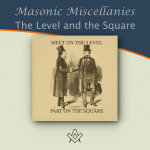 Masonic Miscellanies - The Level and the Square (A Poem) The Level and the Square (A Poem) - "We meet upon the Level, and we part upon the Square – |
 Masonic Miscellanies - The Mystic Tie What is the 'Mystic Tie'? Clue: it's not an item of neckwear! |
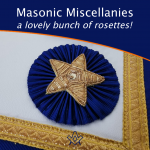 Masonic Miscellanies - A lovely bunch of rosettes! Where did the origin of the use of rosettes on Masonic aprons come from ? |
 Masonic Miscellanies - The Lodge of Sorrow The Lodge of Sorrow - Extracted General Ahiman Rezon, by Daniel Sickles, [1868] |
 Masonic Miscellanies - Memento Mori Memento Mori - a Masonic reminder to make your mark on the world |
 Masonic Miscellanies - A closer look at the Level and the Plumb-rule A closer look at the Level and the Plumb-rule |
 Masonic Miscellanies - The Symbolism of the Gloves The Symbolism of the Gloves and why Freemasons wear white gloves |
 Masonic Miscellanies - Will the real James Anderson please stand up? Will the real James Anderson please stand up? |
 Masonic Miscellanies - The Legend of the Third Degree The most important and significant of the legendary symbols of Freemasonry is, undoubtedly, that which relates to the fate of Hiram Abif. |
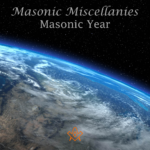 Masonic Miscellanies - Masonic Calendar Why do Freemasons use different 'years' to our regular calendar? |
 Masonic Miscellanies - What is a 'Lewis'? The English word 'Lewis' is a term belonging to operative Masonry, and signifies an iron cramp, which is inserted in a cavity prepared for the purpose in a large stone. |
 Masonic Miscellanies - From J.S.M. Ward Ever wondered why masons had to be 'free' or why we have a Tyler? |
masonic knowledge
to be a better citizen of the world
share the square with two brothers

click image to open email app on mobile device









